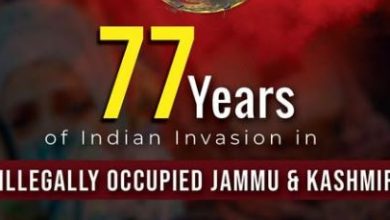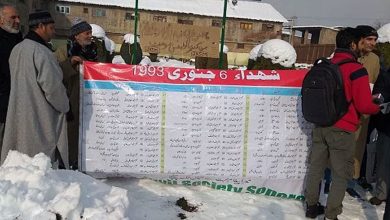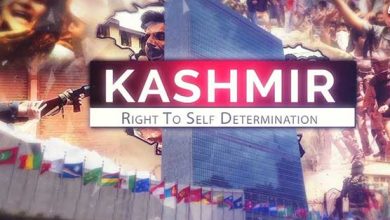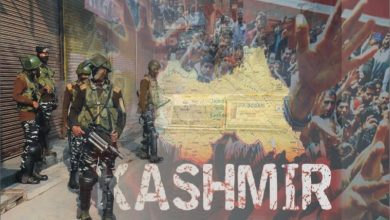Article: Remembering the martyrs of Jammu massacre
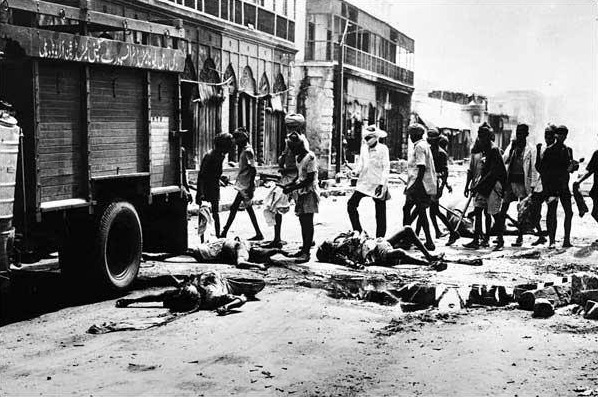 Humayun Aziz Sandeela
Humayun Aziz Sandeela
Each year on November 6, Kashmiris observe Jammu Martyrs’ Day to honor the lives lost in the Jammu Massacre of 1947, one of the darkest chapters in the history of Jammu and Kashmir. This tragic event, which saw the massacre of thousands of Kashmiri Muslims, stands as a symbol of ethnic cleansing and communal violence with lasting repercussions. Despite its magnitude, the Jammu Massacre remains relatively unknown internationally, overshadowed by other narratives of partition violence.
The Jammu Massacre traces back to the turbulent period of the 1947 partition of British India. The princely state of Jammu and Kashmir, ruled by Maharaja Hari Singh, a Hindu monarch in a predominantly Muslim region, became a focal point for both India and Pakistan, each vying for control over its territories. When partition-induced migrations and communal tensions swept across the subcontinent, Jammu and Kashmir was not spared. Muslim soldiers returning from World War II, especially from Poonch, began a “no tax” revolt due to severe economic hardships. However, the Maharaja’s administration responded with a forceful crackdown, bringing in additional Hindu and Sikh fighters, disarming Muslims, and leaving them defenceless against the violence that followed.
Beginning in October and peaking in November 1947, the massacre involved the Maharaja’s forces as well as armed militias and extremist groups, including the Rashtriya Swayamsevak Sangh (RSS). According to journalist and eyewitness Ved Bhasin, armed Sikh militias openly terrorized the Muslim population. Brutality and violence led to mass killings, forced migrations, and communal strife that uprooted generations of Kashmiri Muslims.
Mohandas Karamchand Gandhi did comment on the situation in Jammu on 25 December 1947 and his remarks have found mention in volume 90 of his Collected Works as well as quoted in ‘The second assassination of Gandhi?’ by Ram Puniyani: “The Hindus and Sikhs of Jammu and those who had gone there from outside killed Muslims. The Maharaja of Kashmir is responsible for what is happening there…Muslim women have been dishonoured.”
The Jammu Massacre was not an isolated incident but a prolonged operation aimed at removing the Muslim population from Jammu and Kashmir. Historical estimates of the death toll vary, Horace Alexander’s article in The Spectator from January 16, 1948, is frequently referenced, where he estimated the death toll at 200,000. A report from The Times, London, dated August 10, 1948, stated, “237,000 Muslims were systematically killed—unless they managed to flee across the border to Pakistan—by Dogra State forces led by the Maharaja himself and supported by Hindu and Sikh groups. On one notorious day, over 100 trucks filled with Muslim women, children, and the elderly were led into the remote forests of Kathua, where they were ambushed, raped, looted, and slaughtered.
Thousands of Kashmiri Muslims attempting to migrate to Pakistan were ambushed along the Suchit Garh route to Sialkot. Those who managed to cross into Pakistan brought stories of friends and relatives massacred, lives shattered, and livelihoods destroyed. In one brutal day, over 25,000 Muslims gathered at Miran Sahib and Ranbir Singhpura were machine-gunned in cold blood.
Reports indicate that the Maharaja’s forces deliberately turned Jammu into a stronghold for extremist groups, with violence carried out in front of the Indian army, which had begun occupying parts of the princely stae by then. Eyewitnesses, such as Amanullah Khan Naqshbandi, recount how Muslims were deceived into thinking they would be transported safely to Pakistan, only to be ambushed and slaughtered.
The Jammu Massacre reshaped the demography of Jammu and Kashmir. Historian Christopher Snedden in his book ‘The Untold Story of the People of Azad Kashmir’ argues that the massacre served dual purposes: it enabled looting and violence but, more significantly, altered the region’s demographics, creating a Hindu and Sikh majority in Jammu and displacing countless Muslims to Pakistan. Historian Alastair Lamb noted that the Jammu region was practically emptied of Muslims due to the violence.
In the aftermath, this demographic shift left a lasting mark on the identity and political trajectory of Jammu and Kashmir. Many believe that the massacre was part of a calculated effort to weaken the pro-Pakistan Muslim population, a strategy that some argue is still pursued by India’s ruling Hindu nationalist government.
In Pakistan and Azad Jammu and Kashmir, November 6 is observed as Jammu Martyrs’ Day. This day serves as a reminder of the need for historical justice and solidarity with the Kashmiri people. In recent years, it has gained additional significance as a platform for raising awareness about ongoing struggles in the region. In Azad Jammu and Kashmir, activists call on global human rights organizations and international bodies to recognize and address these historical atrocities, along with contemporary abuses in Indian-administered Jammu and Kashmir.
Ongoing policies by India’s ruling Bharatiya Janata Party (BJP) are often seen as extensions of the Maharaja’s strategy in 1947. Actions such as the abrogation of Articles 370 and 35A, which removed Jammu and Kashmir’s special status, and efforts to settle non-Muslim populations in the region are viewed as demographic tactics intended to marginalise the region’s Muslim majority further. These policies underscore the lasting implications of the Jammu Massacre and highlight the need for international attention.
The Jammu Massacre remains a dark and often forgotten chapter in South Asian history. Survivors and their descendants continue to call for justice and for global recognition of the sacrifices made by Jammu’s Muslim population in the wake of partition. The voices of survivors, like Mr. Naqshbandi, should be preserved for future generations to understand the gravity of these events and the lasting trauma inflicted on Jammu’s Muslim community.
The international community’s silence on the Jammu Massacre reflects a broader double standard in addressing human rights abuses globally. Observances like Jammu Martyrs’ Day serve as a solemn reminder of the region’s ongoing struggles and the need for justice.
By marking Jammu Martyrs’ Day, Pakistan and Kashmiri activists emphasize the duty of the Muslim world and human rights organizations worldwide to hold India accountable for past and present actions. Observing Youm-e-Shuhada Jammu serves as a call for historical justice, not only to honour the victims but to advocate for peace and self-determination in Kashmir.





